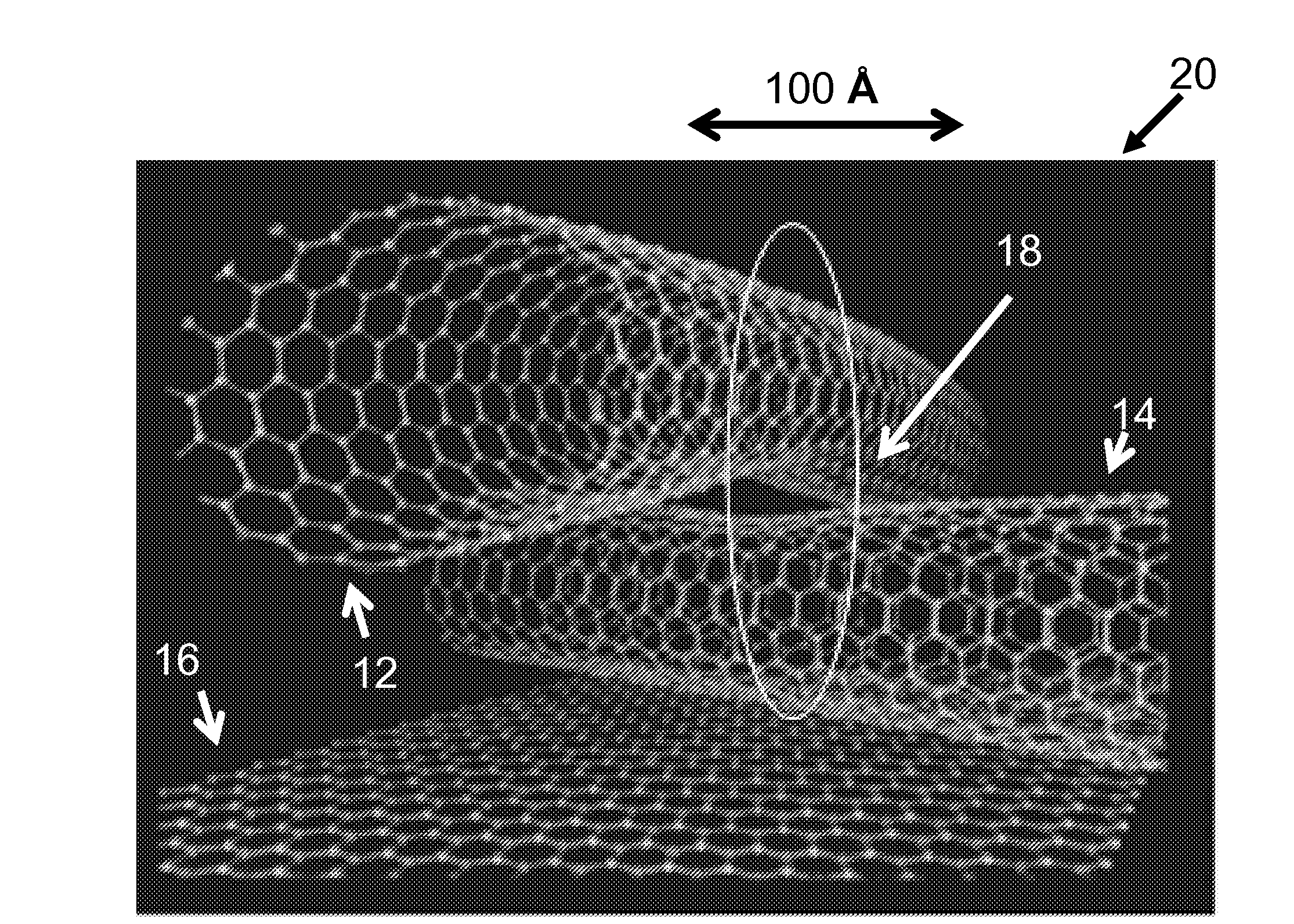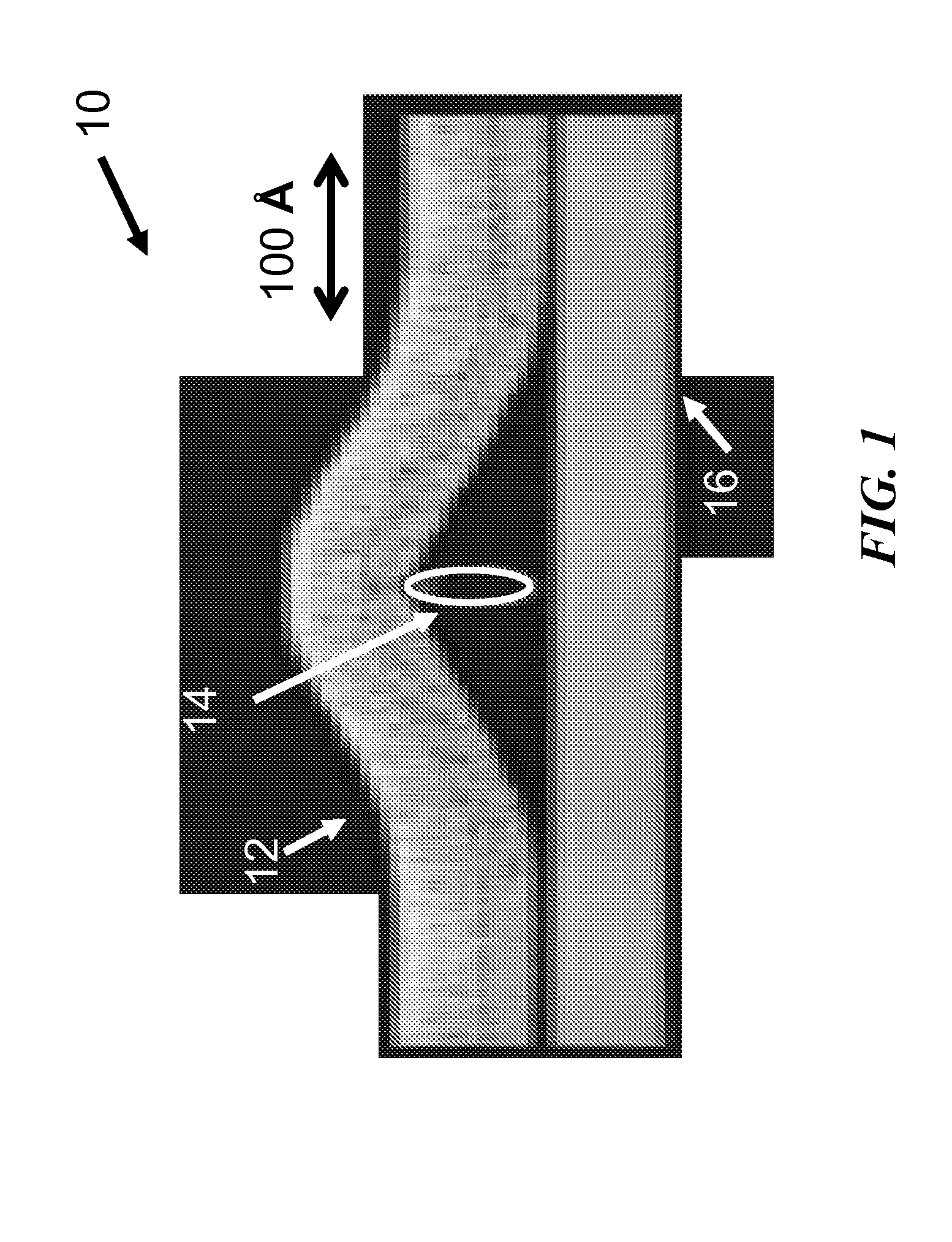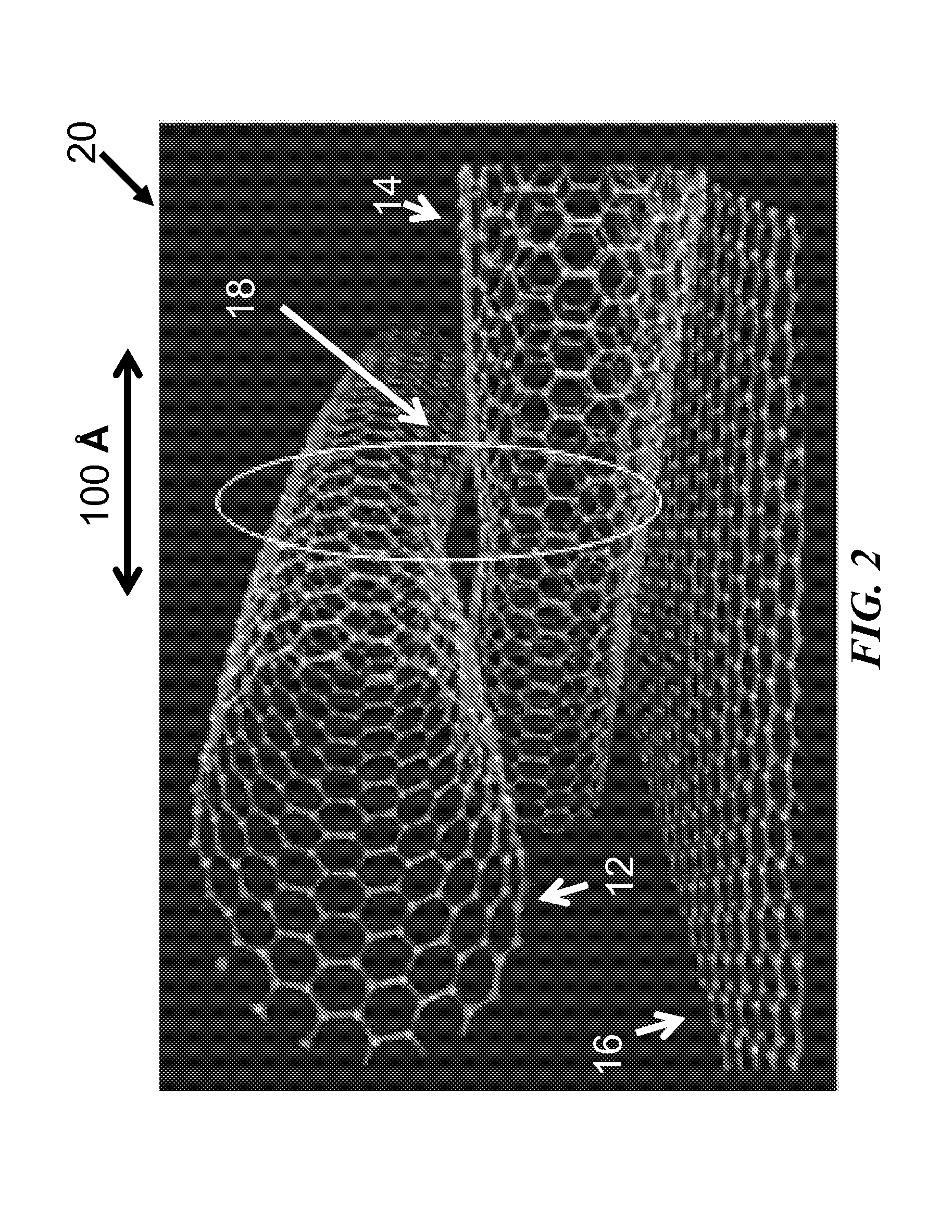Method and system for improving conductivity of nanotube nets and related materials
a technology of nanotube nets and conductivity, applied in the field of thin films, can solve the problems of low thermal conductivity of cnt nets, low low thermal conductivity of tcfs such as indium tin oxide (ito), and achieve the effect of improving the overall electrical conductivity of cnt nets, enhancing the electrical conductivity of nanotube nets, and improving the electrical conductivity of nodes
- Summary
- Abstract
- Description
- Claims
- Application Information
AI Technical Summary
Benefits of technology
Problems solved by technology
Method used
Image
Examples
Embodiment Construction
[0023]In describing embodiments of the present invention illustrated in the drawings, specific terminology is employed for the sake of clarity.
[0024]In the present disclosure, the word “nanotube” may be a quasi-1D nano-structure with at least one dimension being less than 100 nanometers and consisting of, but not limited to, a nanotube (“NT”), a nanowire (“NW”), or a nanoribbon. Examples may include, but are not limited to, silicon nanowires, germanium nanowires, boron nitride nanowires, and boron carbide nanowires. The benefits of the present disclosure can be derived from essentially any nanotube, such as the ones previously defined.
[0025]Carbon nanotube nets or CNT nets are defined as a random network of CNTs, such as in thin film form. The disclosed subject matter focuses on CNT nets, but it is understood that the individual elements of the nanotube network of interest could be NWs, NTs, or nanoribbons of other material composition than carbon, so long as the individual elements...
PUM
| Property | Measurement | Unit |
|---|---|---|
| conductivity | aaaaa | aaaaa |
| force | aaaaa | aaaaa |
| diameter | aaaaa | aaaaa |
Abstract
Description
Claims
Application Information
 Login to View More
Login to View More - R&D
- Intellectual Property
- Life Sciences
- Materials
- Tech Scout
- Unparalleled Data Quality
- Higher Quality Content
- 60% Fewer Hallucinations
Browse by: Latest US Patents, China's latest patents, Technical Efficacy Thesaurus, Application Domain, Technology Topic, Popular Technical Reports.
© 2025 PatSnap. All rights reserved.Legal|Privacy policy|Modern Slavery Act Transparency Statement|Sitemap|About US| Contact US: help@patsnap.com



